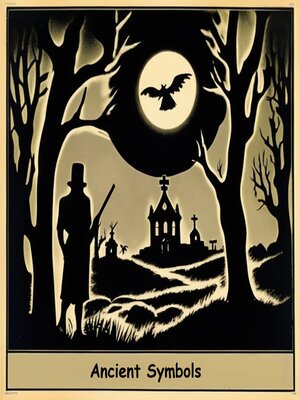
Sign up to save your library
With an OverDrive account, you can save your favorite libraries for at-a-glance information about availability. Find out more about OverDrive accounts.
Find this title in Libby, the library reading app by OverDrive.



Search for a digital library with this title
Title found at these libraries:
| Library Name | Distance |
|---|---|
| Loading... |
Ancient symbols are powerful visual representations used by cultures throughout history to convey complex ideas, beliefs, and values. They often appear in religious, political, magical, and artistic contexts and are frequently found in carvings, manuscripts, architecture, and artifacts. Here's a general overview of the subject:
What Are Ancient Symbols?
Ancient symbols are graphic signs used before widespread literacy to communicate, record, or express:
Spiritual or religious meaning
Cultural identity or authority
Natural elements or cosmic forces
Mystical or magical concepts
Mathematical, calendrical, or astrological data
Types of Ancient Symbols by Culture
1. Egyptian Symbols
Ankh (☥): Symbol of life and immortality.
Eye of Horus: Protection, healing, and royal power.
Scarab beetle: Rebirth and transformation.
2. Mesopotamian Symbols
Cuneiform signs: The earliest writing system, often symbolic.
Winged sun or god: Divine protection and kingship.
The Tree of Life: Cosmic order and divine connection.
3. Greek Symbols
Labyrinth: Symbol of the soul's journey or a challenge.
Omega (Ω): End or great completion (used more in later contexts).
Rod of Asclepius: Healing and medicine.
4. Norse Symbols
Yggdrasil: The World Tree connecting all realms.
Valknut: Associated with Odin, death, and the afterlife.
Runes: Alphabetic symbols used also for magic and divination.
5. Celtic Symbols
Triskelion (☘️): Movement, cycles, and the triple nature of existence.
Celtic knot: Eternity and the interconnectedness of life.
Claddagh: Love, loyalty, and friendship.
6. Chinese Symbols
Yin-Yang (☯): Balance of opposites.
Dragon: Power, prosperity, and cosmic energy.
Five Elements: Wood, Fire, Earth, Metal, Water – harmony of nature.
7. Native American Symbols
Thunderbird: Divine power and storms.
Spiral: Journey, growth, or the cycle of life.
Four Directions (cross): Balance and spiritual guidance.
Why Study Ancient Symbols?
Understanding cultures: They give insight into how ancient peoples viewed life, death, gods, and the universe.
Art and architecture: Symbols were foundational in design and religious construction.
Language origins: Many writing systems evolved from symbolic pictographs (e.g., hieroglyphs, cuneiform).
Modern influence: Many modern logos, spiritual systems, and esoteric traditions are rooted in ancient symbolism.







